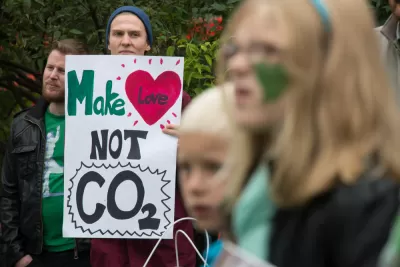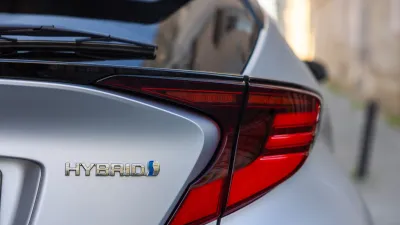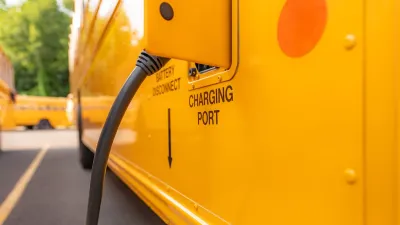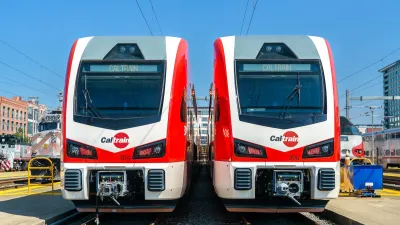There's a trend here.

An article by Ronald Brownstein traces the connection between the 2016 political election and carbon emissions. It shouldn't be surprising that their would be a connection between the two, energy and environmental has always been a partisan issue and recently, "Trump has indelibly endorsed the fear that reducing carbon emissions to combat the destabilizing threat of global climate change will undermine economic growth," writes Brownstein.
To counter those fears, Brownstein references Brookings Institution research showing that "since 2000 the United States increased its economic output by 30 percent while reducing carbon emissions by 10 percent." Brownstein takes the next logical step and finds that some states, like Oklahoma and Texas, are still emitting a lot more than others. What's more, "that energy divide now almost perfectly tracks the current political divide."
Comparing the latest federal figures on states’ per capita carbon emissions with the 2016 election results produces a clear pattern. Trump carried all of the 22 states with the most per capita carbon emissions, except for New Mexico, and 27 of the top 32 in all. (Colorado, Illinois, Delaware, and Minnesota were the Clinton-voting exceptions.) The Democratic nominee won 15 of the 18 states with the lowest per capita emissions—with the exception of Florida, North Carolina, and Idaho.
Brownstein adds some demographic and cultural factors to this understanding to determine a very challenging road ahead for the Democrats to recover some of their lost political power ahead of the 2020 presidential election—even if the Trump Administration can do nothing to stem the decline of the carbon economy.
FULL STORY: How Carbon Emissions Explain Trump's Win

Alabama: Trump Terminates Settlements for Black Communities Harmed By Raw Sewage
Trump deemed the landmark civil rights agreement “illegal DEI and environmental justice policy.”

Study: Maui’s Plan to Convert Vacation Rentals to Long-Term Housing Could Cause Nearly $1 Billion Economic Loss
The plan would reduce visitor accommodation by 25% resulting in 1,900 jobs lost.

Planetizen Federal Action Tracker
A weekly monitor of how Trump’s orders and actions are impacting planners and planning in America.

Waymo Gets Permission to Map SF’s Market Street
If allowed to operate on the traffic-restricted street, Waymo’s autonomous taxis would have a leg up over ride-hailing competitors — and counter the city’s efforts to grow bike and pedestrian on the thoroughfare.

Parklet Symposium Highlights the Success of Shared Spaces
Parklets got a boost during the Covid-19 pandemic, when the concept was translated to outdoor dining programs that offered restaurants a lifeline during the shutdown.

Federal Homelessness Agency Places Entire Staff on Leave
The U.S. Interagency Council on Homelessness is the only federal agency dedicated to preventing and ending homelessness.
Urban Design for Planners 1: Software Tools
This six-course series explores essential urban design concepts using open source software and equips planners with the tools they need to participate fully in the urban design process.
Planning for Universal Design
Learn the tools for implementing Universal Design in planning regulations.
Caltrans
Smith Gee Studio
Institute for Housing and Urban Development Studies (IHS)
City of Grandview
Harvard GSD Executive Education
Toledo-Lucas County Plan Commissions
Salt Lake City
NYU Wagner Graduate School of Public Service





























